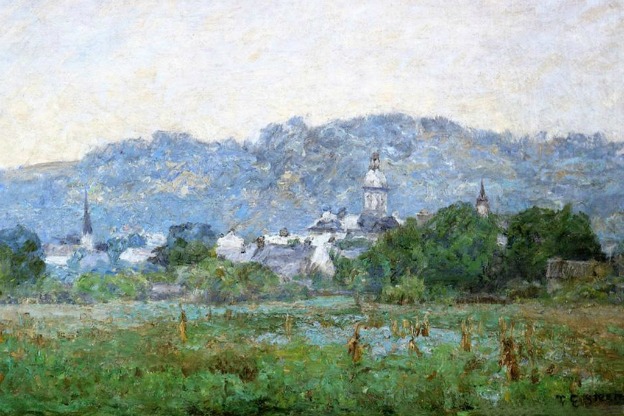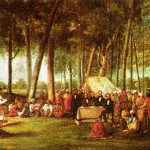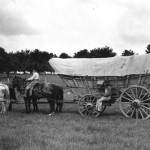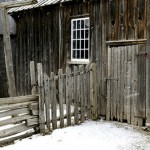Although Brookville never grew to become a large city, renowned Hoosier School painter T.C. Steele put the location on the map as the site of many of the landscape paintings he made later in the 19th century.
Psychologists often say that moving from one home to another is one of the most stressful events in life. Packing and unpacking possessions, dealing with movers and realtors and utility companies—all these things and more create and compound stress. Relocating in the 21st century, however, pales in comparison to the experiences of those who moved to the frontiers of the American continent in previous centuries.
In 1812, Pennsylvania lawyer John Test and his family moved from their home, planning to settle in the growing river town of Cincinnati, Ohio. Sickened by the area’s endemic disease, however, the family soon moved on into Indiana, where John had purchased “a large double cabin” on the banks of the Whitewater River in the “town” of Brookville. In her memoir, John’s daughter Maria recalled that her family—father, mother, and four young siblings—traveled through the territory on “a newly cut road” full of “scarcely removed” tree stumps.
Finally arriving in Brookville, Maria’s mother and her children probably expected to see a settlement similar to the small rural towns in Pennsylvania and southern Ohio. Instead, they discovered that their cabin was surrounded by the “impenetrable wilderness” of Indiana forest, “dense and dark”.
Mrs. Test must have sighed with relief when her husband proposed going “into town” to the hotel for dinner. The children washed their faces and combed their hair and the family set out for their first dinner in their new hometown. The town of Brookville, however, proved to be no more than a handful of log cabins along the road; the “hotel” was one of those cabins, small and surrounded “by a rough worn fence” which the family had to climb over. One table and a few homemade chairs made up the dining space, at which sight Maria’s mother “seated herself and gave vent to tears that could no longer be suppressed”.
Dinner somewhat restored the family’s spirits. The landlady of the hotel fed them “nice fried squirrel and wild turkey, cornbread, potatoes, together with bacon and eggs and coffee” on a “clean table cloth.” Maria recalled that in subsequent days her mother dedicated herself to making the best of her situation and “went to arranging her own cabin, if not with cheerfulness at least with a feeling of submission.”
Brookville grew during the mid-nineteenth century when the Whitewater Canal flourished and brought new business to the town, and it became the seat of Franklin County. But Brookville never became a city and never rivaled the growth of Cincinnati. It remained the county seat, and became a regional recreation center when Brookville Lake was formed by a reservoir. The cabins that now greet tourists who come to swim, fish, and boat on the lake are modern log buildings that would be unrecognizable to Maria Test and her family.
A Moment of Indiana History is a production of WFIU Public Radio in partnership with the Indiana Public Broadcasting Stations. Research support comes from Indiana Magazine of History published by the Indiana University Department of History.
Source: Travel Account of Helen Maria Test, in Shirley McCord, comp., Travel Accounts of Indiana 1679-1961 (1970)























